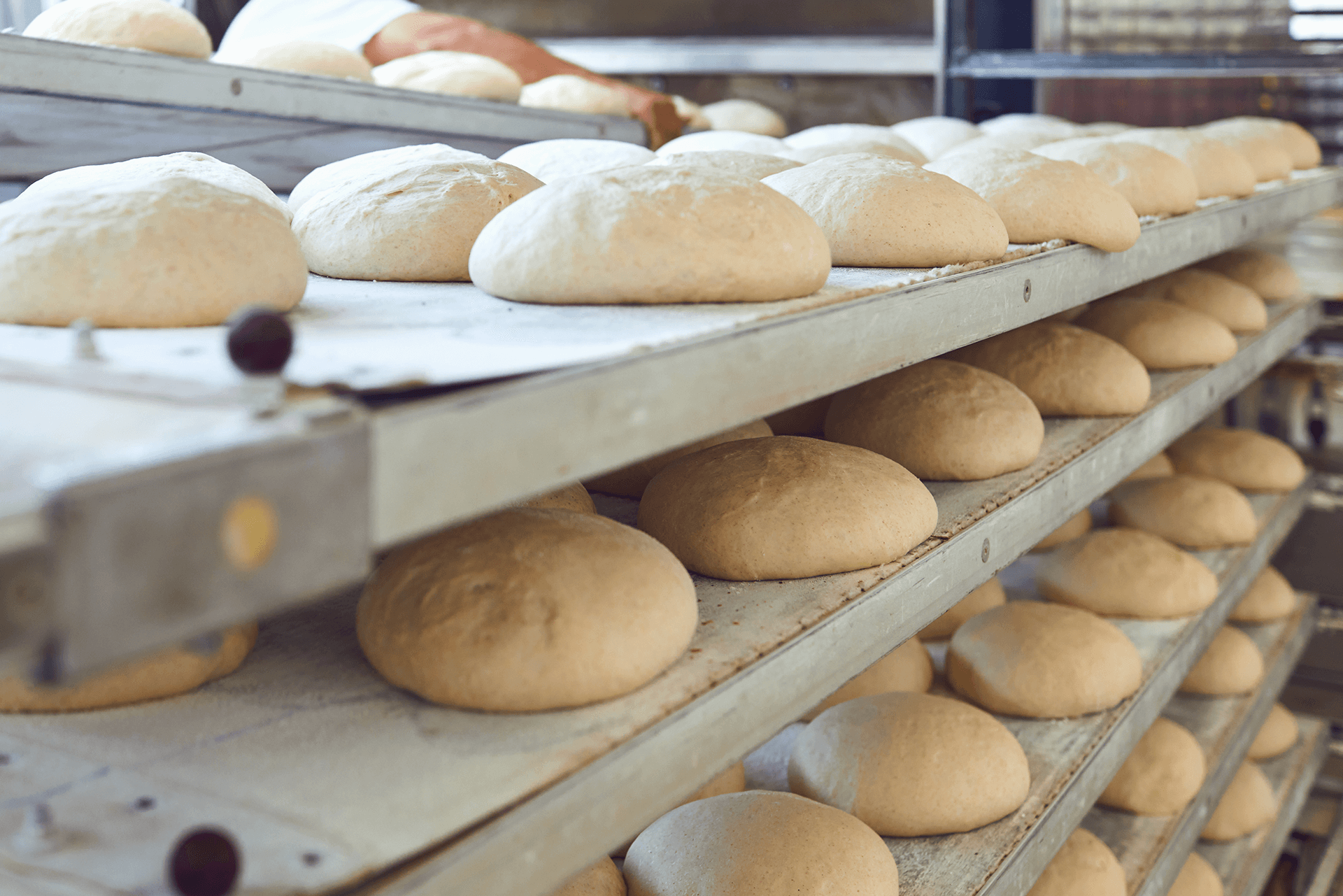A well-controlled oven has an important influence upon the overall quality of a loaf of bread. Oven conditions require the heat transfer mechanisms of convection, conduction and radiation. The effectiveness of these mechanisms may influence the choice of oven design and type and play an important role in considering the style of bread to be baked. However, regardless of the oven design, problems may be encountered during the baking process when incorrect baking conditions are applied. Common baking problems include:
Poor Heat Distribution
Unevenly baked bread can be the result of an oven that does not distribute heat properly. Evenly distributed top and bottom heat is an essential requirement of good baking conditions in order to avoid faults such as “side wall collapse”.
Insufficient Oven Heat
Insufficient oven heat (cool oven) will produce bread that has excessive volume, harsh texture, poor crumb colour, poor crumb softness and a thick pale crust. The shelf life of the bread may also be affected. In order to avoid or reduce some of these faults, bread baked in these types of ovens will usually require a reduction in final proof time.
Excessive Oven Heat
Excessive oven heat (hot oven) will produce bread having reduced volume; dark and brittle top, bottom and side crusts; unevenly baked sides; harsh crumb characteristics; poor crumb softness and poor keeping quality.
Incorrect Pan Spacing
For even and thorough baking of the loaf correct spacing of the baking pans is essential. Regardless of the oven design, pans placed closely to one another restrict the circulation of heat within the baking chamber. This will generally result in unevenly baked bread. A space of approximately 5-25 mm between the baking pans is usually sufficient for adequate heat circulation.
Steam
Bakers have used the introduction of steam into the baking oven, with the primary purpose of modifying crust characteristics, for many generations. The injection of steam ensures that an attractive crust is achieved whilst also assisting oven spring and loaf volume. An oven having low steam levels or no steam at all usually results in the bread having tough leathery crust characteristics, poor crust colour and bloom, poor oven spring and a tendency for the top crust to separate easily from the crumb.
Excessive quantities of steam may result in “blisters” forming on the surface of the crust of the bread. Therefore, the correct time, temperature and amount of steam introduced into the oven will vary according to the type of oven. Care should be taken to ensure only the correct steaming conditions are applied to the bread. During the baking period the bread will also produce it’s own steam ensuring a humid atmosphere exists within the baking chamber. To utilise this some ovens have been designed to make use of this principle and usually do not require additional steam injection.







